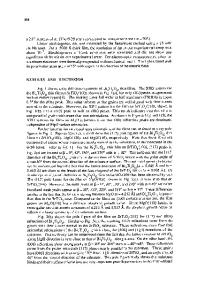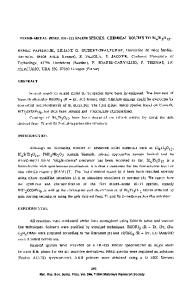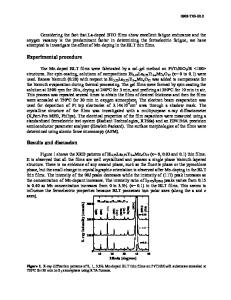Ferroelectric Bi 3.5 Nd 0.5 Ti 3 O 12 Nanoparticles Synthesized at Low Temperatures
- PDF / 203,094 Bytes
- 1 Pages / 576 x 783 pts Page_size
- 81 Downloads / 356 Views
Single Gallium Nanoparticle Displays Optical Phase-Change Memory Memory devices based on phase changes have the potential to supplant electronic memories due to their greatly reduced size and power consumption. In addition, crystalline-to-crystalline transitions exhibited in polymorphic systems may provide higher base logic than current binary systems. It has been previously demonstrated that single Ga nanoparticles exhibit lightinduced structural phase changes with different dielectric properties. Recently, B.F. Soares, F. Jonsson, and N.I. Zheludev from the Optoelectronics Research Centre, University of Southampton, United Kingdom, have demonstrated that a single Ga nanoparticle undergoing light-induced phase changes acts as an all-optical, rewriteable, quaternary memory element (i. e., a memory element with four stable logic states). As reported in the April 13 issue of Physical Review Letters (DOI:10.1103/ PhysRevLett.98.153905), the researchers used the atomic beam from an effusion cell and a light-assisted deposition technique to grow an 80-nm Ga nanoparticle at the 30-nm aperture of the tip of a gold-coated tapered fiber, which was kept at 80 K. The nanoparticle was then connected to an external fiberoptic and placed in a cryostat. The four observed memory states, referred to as 0, 1, 2, and 3, correspond to three different crystal structures and the Ga liquid. The researchers first activated the transitions to the four states sequentially by heating the nanoparticle slowly from 100 K to 160 K. Switching nonsequentially between the nanoparticle’s four states, that is, writing information to the nanoparticle, was achieved with single laser pulses while sampling the nanoparticle’s reflectivity with pump-probe lasers, operating at a much lower intensity than the write laser, corresponds to reading the information. The researchers switched between different logical states in a controlled manner, thereby demonstrating the memory functionality. Moreover, higher order logical functionality was shown by switching directly from the ground state to any targeted higher state. For example, at 120 K, switching from state 0 to state 1 was accomplished with a 1.5 pJ pulse of 1-μs duration while a 4.85 pJ pulse of 1-μs duration switched 0 to 3. After exposure to the optical pulses, the nanoparticle remained in state 3 even after the ambient temperature was reduced to 100 K. Returning to the 0 state required a temperature of 100 K and turning off the read lasers. The researchers said that “with quaternary memory functionality, one nanoparticle is capable of storing an estimated 0.2 Tb 528
in-2, compared to 0.015 Tb in-2 in Blu-ray DVDs, and requires about one-tenth of the energy required to write single bits of information using current state-of-the-art methods. These figures demonstrate the potential for single nanoparticles to provide memory functionality in future highly integrated nanophotonic devices, operating at very low power levels. ” STEVEN TROHALAKI
Ferroelectric Bi3.5Nd0.5Ti3O12 Nanoparticles Synthesized at Low
Data Loading...











